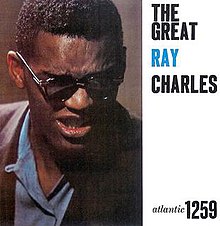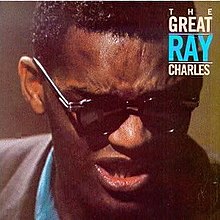
The Genius of Ray Charles is a 1959 Ray Charles album, released in October by Atlantic Records, the seventh album since the debut Ray Charles in 1957. The album consists of swinging pop with big band arrangements. It comprises a first half of big band songs and a second half of string-backed ballads. The Genius of Ray Charles sold fewer than 500,000 copies and charted at number 17 on the Billboard 200. "Let the Good Times Roll" and "Don't Let the Sun Catch You Cryin'" were released as singles in 1959.

Ray Charles is the first studio album by American pianist, vocalist, and band leader Ray Charles. Originally released in 1957 on Atlantic Records, it was re-released under the title Hallelujah I Love Her So in 1962.
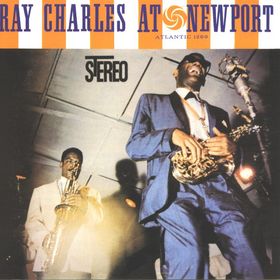
Ray Charles at Newport is a 1958 live album of Ray Charles' July 5, 1958 performance at the Newport Jazz Festival. The detailed liner notes on the album were written by Kenneth Lee Karpe. All tracks from this Newport album, along with all tracks from his 1959 Herndon Stadium performance in Atlanta, were also released on the Atlantic compilation LP Ray Charles Live. A later CD reissue of that compilation album included a previously unissued song from the 1958 Newport concert, "Swanee River Rock".

You Never Know Who Your Friends Are is the second solo album by American multi-instrumentalist Al Kooper, issued in 1969 on Columbia Records.

Extension of a Man is an album released by the R&B/Soul singer Donny Hathaway on Atco Records in 1973.
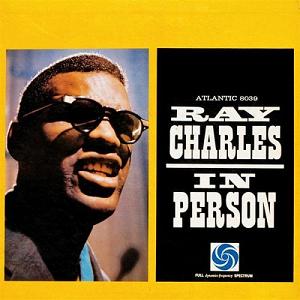
In Person is a live album recorded by Ray Charles on May 28, 1959 on a rainy night in Atlanta, Georgia at Morris Brown College's Herndon Stadium. All tracks from this album together with those from Ray Charles at Newport were also released on the 1987 Atlantic compilation CD, Ray Charles Live.

What'd I Say is an album by American musician Ray Charles, released by Atlantic Records in 1959. His sixth album since the debut Ray Charles in 1957, What'd I Say popularized Charles' first top 10 hit, the title track "What'd I Say", and became his first gold record. The album is included in Robert Christgau's "Basic Record Library" of 1950s and 1960s recordings, published in Christgau's Record Guide: Rock Albums of the Seventies (1981).
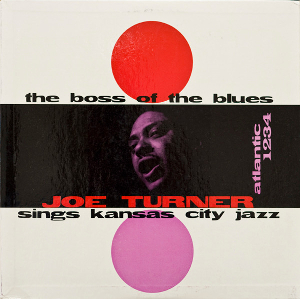
The Boss of the Blues is a 1956 album by the American singer Big Joe Turner. Originally released on the Atlantic label, the album has been reissued many times on cassette and CD by Atlantic, Rhino and Collectables.

Everything Is Everything is the first studio album by American soul artist Donny Hathaway, which was released on July 1, 1970 on the Atlantic Records' subsidiary, Atco.
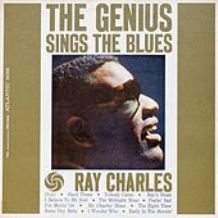
The Genius Sings the Blues is an album by Ray Charles, released in October 1961 on Atlantic Records. The album was his last release for Atlantic, compiling twelve blues songs from various sessions during his tenure for the label. The album showcases Charles's stylistic development with a combination of piano blues, jazz, and southern R&B. The photo for the album cover was taken by renowned photographer Lee Friedlander. The Genius Sings the Blues was reissued in 2003 by Rhino Entertainment with liner notes by Billy Taylor.

Yes Indeed!! is the fourth album by Ray Charles, released in 1958 by Atlantic. It was the second of three Atlantic LPs that compiled Charles' hit singles for the label.

The Genius After Hours is an album by American musician Ray Charles, released in 1961. The songs featured on the album were taken from the same three studio sessions that created his 1957 album The Great Ray Charles, which featured the use of both a trio and a septet; the latter was arranged by Quincy Jones. Also appearing on The Genius After Hours is David "Fathead" Newman on tenor and alto saxophone, alongside trumpeter Joseph Bridgewater.
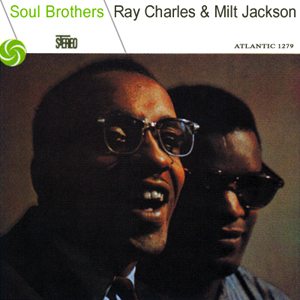
Soul Brothers is the third album recorded by Ray Charles and the eleventh album by Milt Jackson and released by Atlantic Records in 1958. The album was later re-issued in a two-CD compilation together with the other Charles–Jackson album Soul Meeting and included additional tracks from the same recording sessions not present on the original LP releases.

Soul Meeting is a 1961 Atlantic Records album of recordings made by Ray Charles and Milt Jackson in 1957. The album was later re-issued together with the earlier Soul Brothers (1958), on a 2 CD compilation together with other 'bonus' tracks from the same Charles and Jackson recording sessions.
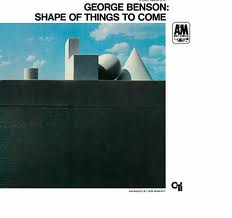
Shape of Things to Come is the fifth studio album by the American guitarist George Benson, released in 1968 and arranged by Don Sebesky. It was his first album for A&M Records and his first album to be produced by Creed Taylor, who would remain his producer until 1976.

More Soul is an album by jazz saxophonist Hank Crawford. Atlantic Records released the album in 1961. More Soul is Crawford's first album as a leader, recorded on October 7, 1960 while he was the music director in Ray Charles' group. Charles provided the arrangement for the track "The Story."
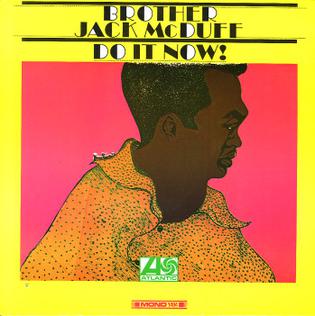
Do It Now! is a 1967 album by organist Brother Jack McDuff which was his third release on the Atlantic label.

There Comes a Time is an album by the jazz composer, arranger, conductor and pianist Gil Evans, recorded in 1975 and performed by Evans with an orchestra featuring David Sanborn, Howard Johnson, Billy Harper and Ryo Kawasaki. The album was re-released with an altered tracklist on CD in 1988.

Primal Scream is the eighth jazz album by Canadian trumpeter Maynard Ferguson on Columbia Records. Primal Scream marks the beginning of the second phase of Ferguson's career with Columbia, where his live big band sound is set aside in favor of lavish studio productions. The album credits reveal an all-star ensemble made up of New York's finest musicians, along with backing vocalists and strings were recruited for this release.

New Vintage is the tenth studio album by Canadian jazz trumpeter Maynard Ferguson released in 1977 on Columbia Records. The title is likely an allusion to new recordings of two 'vintage' titles included in the track list. "Maria" was first recorded on Maynard '62, and "Airegin" was first recorded in 1964 for the album Color Him Wild. The front cover plays on this theme, presenting a trumpet in an ice bucket in place of a bottle of champagne, while on the back cover, the cork is seen popping out of the trumpet's bell.
